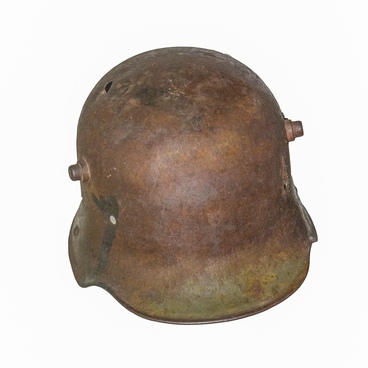After the Great Northern War, the treasury was depleted, and it was necessary to find new deposits of precious metals to replenish it.
On May 22, 1714, Peter the Great signed the decree ‘On the Capture of the Town of Yerket and the Search for Gold Dust along the River Darya.’ It ordered lieutenant colonel Ivan Bucholz to go to Tobolsk, gather a team with the assistance of the governor of Siberia Matvey Gagarin, and move up the Irtysh to the lake of Yamysh.
There Bucholz was to found a fortress, leave the garrison there, and then continue his journey to the city of Yarkend to verify information about the gold dust deposits. On October 1, 1715, the team arrived at Yamysh lake, where it built the fortress on the Presnuha, 6 kilometers from the Irtysh, surrounded by the moat and rampart, by November 10.
At that time, the Dzungar Khanate bordering Russia lost the vast lands of Eastern Altai in the war with China. The Dzungar ruler Tsewang Rabtan has completely conquered the Teleuts and planned to occupy the interfluve of the Ob and the Irtysh. Moreover, the war with the Kazakhs unleashed by the Dzungars led to the deterioration of the situation on the southern borders of Western Siberia.
Before sending the team, prince Gagarin informed the Dzungar ambassadors Tarsohoy and Dundukov who dwelled in Tobolsk that the expedition to Yarkend will engage not in conquest but mineral exploration. But Tsewang Rabtan, alarmed by the rumors about the Russian trip, brought a troop of ten thousand people to the Yamyshevo fortress. In February 1716, it managed to capture horses and part of the supply depot.
The other attempts to storm the fortress were repulsed by the Russians, and the Kalmyks began a two-month siege. In spring, an anthrax epidemic broke out in the expedition, 20-30 people died from it every day, and there were many deserters in the team. The expedition waited for help, but the caravan sent from Tobolsk was captured by the Dzungars.
On April 28, 1716, Bucholz and the remnants of the garrison (about 700 people) sailed down the Irtysh by flat-bottomed boats. The Dzungars did not interfere with the Russians' retreat and even returned some of the prisoners. On about May 4–5, the team arrived at the Om mouth, where the first Omsk fortress was founded.
In the ‘Peter the Great’s Siberian City’ exhibition, the cannonball from the Yamyshevo fortress is displayed. It was found during the expedition of the Omsk State Museum of History and Regional Studies in 1999.
On May 22, 1714, Peter the Great signed the decree ‘On the Capture of the Town of Yerket and the Search for Gold Dust along the River Darya.’ It ordered lieutenant colonel Ivan Bucholz to go to Tobolsk, gather a team with the assistance of the governor of Siberia Matvey Gagarin, and move up the Irtysh to the lake of Yamysh.
There Bucholz was to found a fortress, leave the garrison there, and then continue his journey to the city of Yarkend to verify information about the gold dust deposits. On October 1, 1715, the team arrived at Yamysh lake, where it built the fortress on the Presnuha, 6 kilometers from the Irtysh, surrounded by the moat and rampart, by November 10.
At that time, the Dzungar Khanate bordering Russia lost the vast lands of Eastern Altai in the war with China. The Dzungar ruler Tsewang Rabtan has completely conquered the Teleuts and planned to occupy the interfluve of the Ob and the Irtysh. Moreover, the war with the Kazakhs unleashed by the Dzungars led to the deterioration of the situation on the southern borders of Western Siberia.
Before sending the team, prince Gagarin informed the Dzungar ambassadors Tarsohoy and Dundukov who dwelled in Tobolsk that the expedition to Yarkend will engage not in conquest but mineral exploration. But Tsewang Rabtan, alarmed by the rumors about the Russian trip, brought a troop of ten thousand people to the Yamyshevo fortress. In February 1716, it managed to capture horses and part of the supply depot.
The other attempts to storm the fortress were repulsed by the Russians, and the Kalmyks began a two-month siege. In spring, an anthrax epidemic broke out in the expedition, 20-30 people died from it every day, and there were many deserters in the team. The expedition waited for help, but the caravan sent from Tobolsk was captured by the Dzungars.
On April 28, 1716, Bucholz and the remnants of the garrison (about 700 people) sailed down the Irtysh by flat-bottomed boats. The Dzungars did not interfere with the Russians' retreat and even returned some of the prisoners. On about May 4–5, the team arrived at the Om mouth, where the first Omsk fortress was founded.
In the ‘Peter the Great’s Siberian City’ exhibition, the cannonball from the Yamyshevo fortress is displayed. It was found during the expedition of the Omsk State Museum of History and Regional Studies in 1999.



